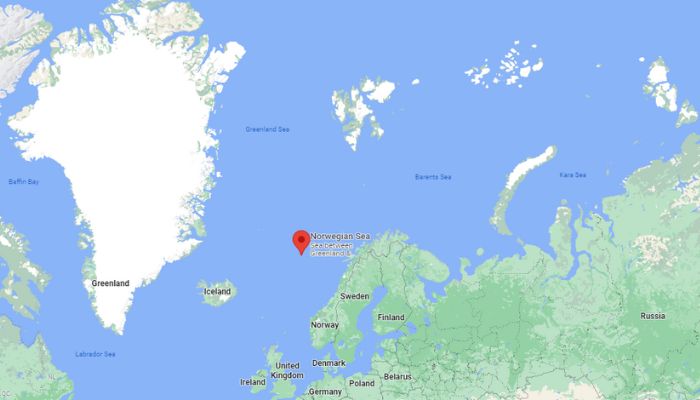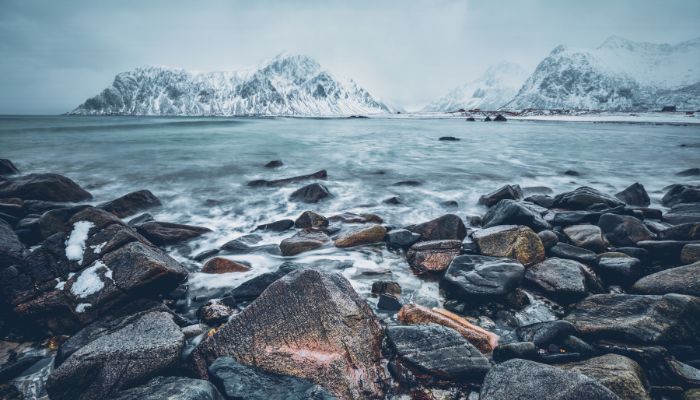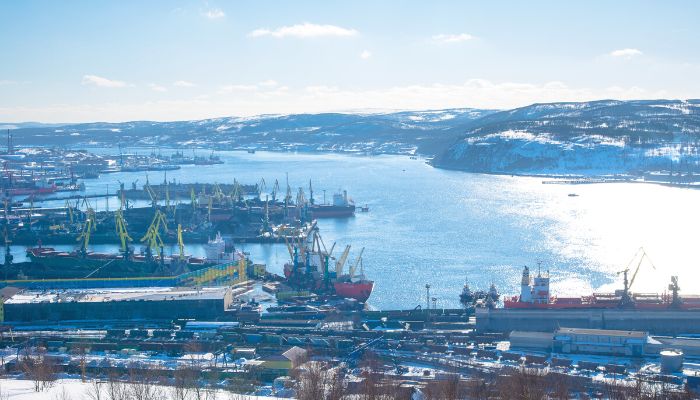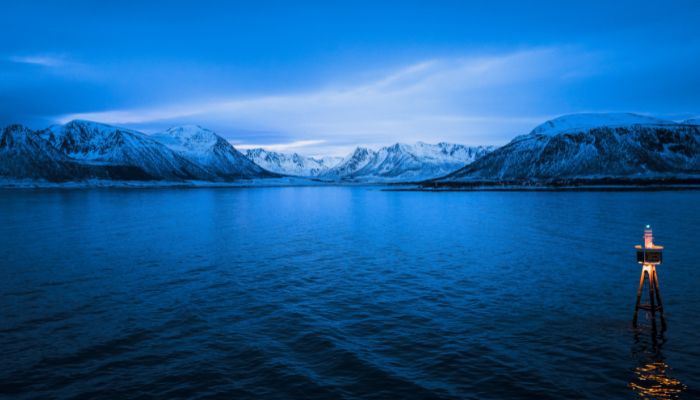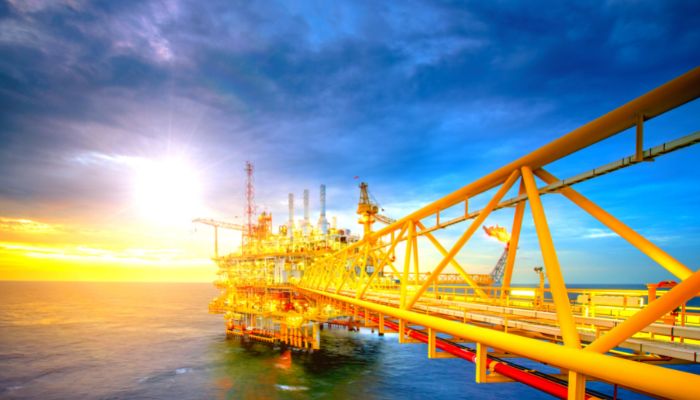9 Norwegian Sea Facts You Might Not Know
The Norwegian Sea is a significant water body grouped with the Atlantic and the Arctic Oceans. It is situated on the northwestern side of Norway between the North Sea and the Greenland Sea.
From the northeast, it joins the Barents Sea, and on the southwestern side, it is distinguished from the Atlantic by an underwater ridge which stretches between Iceland and the Faroe Islands. From the northern side, the Jan Mayen ridge distinguishes it from the Greenland Sea.
The Norwegian Sea spans 534,000 square miles and has an average depth of 2000 m or 6600 ft. The Sea’s maximum depth is 3970 m, and it has 2,000,000 km3 of water.
The Norwegian Sea is a marginal sea and has geographical and geopolitical significance. Let us explore some of its interesting facts.
1. Formed 250 million years ago
The movement of the Eurasian Plate of Norway, the North American plate and Greenland away from each other led to the formation of the Norwegian Sea 250 million years ago.
The present-day continental slope in the Sea is formed by the boundaries between Norway and Greenland, which was formed around the same time and has not changed much since then.
The continental slope extends eastward and goes southwest between the UK and the Faroe islands. It is home to several coral reefs, such as the Lophelia, higher in the Norweigan Sea than anywhere else. This is a stony coral which is also quite old.
After the formation of the Norwegian Sea, the shelf shifted and readjusted, which led to landslides such as the Storegga slide, which happened 8000 years ago and major tsunamis.
The coasts of the Sea took final shape during the last ice age. Massive glaciers pushed into landmasses and created fjords which further elongated continental slopes.
2. Norwegian Sea continental shelf differs from the North Sea and the Barents Sea.
The continental shelf of the Norwegian Sea is around 40 km to 200 km wide. It has a unique shape, different from the shelves of the North Sea and the Barents Sea.
The trenches and underwater peaks are less than 90 m in height, but some are over 400 m tall and covered with sand and mud. They are the perfect spawning areas for innumerable fish species that live here.
The Sea’s deepest point lies at 3000 metres. It has two basins divided by a ridge. The southern one is bigger and deeper, about 3500-4000 m, while the north basin is shallow, only 3200 to 3300 m deep.
Continental slopes designate the borders of the basins. Towards the south are the European Continental shelf and the North Sea, and towards the east are the Eurasian continental shelf and the Barents Sea.
From the west, the Scotland-Greenland ridge distinguishes the Norwegian Sea from the North Atlantic Ocean. This ridge is 500 m deep and goes to 850 m only in some areas. Towards the northern side is the Jan Mayen and Mohns Ridge, which is 2000 m and has a few trenches going to 2600 m.
3. Four major water masses meet in the Norwegian Sea.
Four water masses in the Arctic and Atlantic Oceans converge in the Sea. Also, the other currents circulating in the water body are essential for regulating the world climate.
The North Atlantic current, which is warm and has salty waters, comes from the Atlantic. On the other hand, the Norwegian current is quite cold, and saline comes from the North Sea. Cold water from the Norwegian Sea flows to Iceland and east to the Arctic due to the East Iceland Current.
This current circulates in the mid layers of the sea waters. Deep water comes here from the Greenland Sea. Norwegian waters experience semi-dural tides going as high as 3.4 metres.
4. The Norwegian Sea is ice-free throughout the year.
The climate of the Norwegian Sea is affected by the Thermohaline circulation, which also results in a temperature difference of 10 degrees Celsius between the coast and the Sea.
The temperature began to rise between the 1920s and the 1960s. Storms became rare in this period since they were once quite frequent between 1810 and 1900.
Compared to Greenland and the Arctic Seas, the Norwegian Sea does not freeze throughout the year due to the prevalence of warm currents.
The convection between warm waters and cold air in winter has a vital role in the Arctic climate. In winter, the Norwegian Sea has the lowest air pressure in the Arctic, leading to Icelandic low depressions. Water temperatures range from 2 to 7 degrees Celsius in February to 8-12 degrees Celsius in August.
5. Norwegian Sea has around 89 ports on its shores
The Norwegian Sea has many small and big harbours on its coasts that support the tourism industry, manufacturing and shipping. These ports lie in the nations bordering the Sea, such as the Faroe Islands, Norway, the UK and Iceland.
The Norwegian Sea offers a direct maritime route from the Atlantic to the ports of Russia in the Arctic region, mainly Murmansk, Arkhangelsk and Kandalaksha. This route was also used during the Second World War, handling over four million tonnes of cargo.
The Northern Sea Route passes through it, which allows European vessels to transport goods to Asia. A vital port is Runavik, located on the southeastern side of Kongshavn, south of Skalafjordur. It has several berths that handle dry and liquid bulk and also passengers. Other important ports include the port of Breivik, Havoysund, Akeroya, Kongshavn etc.
6. Contains plants and animals of boreal and Arctic conditions
Since the Norwegian Sea is a transitional zone between the Boreal and Arctic climatic conditions, it has plants and animal species specific to both regions. The Arctic species are found throughout the Iceland waters and in the centre of the Sea, while boreal species are found near its border with the Greenland Sea and the Barents Sea.
A few species, such as the capelin, live between the Arctic and the Atlantic.
Much marine life in the Sea is found in the upper water layer. The Norwegian Sea is also famous for its phytoplankton Bloom which occurs at the start of spring and peaks in May, with the most common species being diatoms.
The coasts of the Norwegian Sea act as critical spawning grounds for herring in the entire North Atlantic region. The population of this fish varies significantly across the Sea due to overfishing in some areas.
Majestic animals like the orca whales, humpbacks, minke and sei whales also call the Sea their home. Sadly, due to whaling in the 19h century, bowhead whales are no longer found in the Norwegian Sea.
Other prominent animals include harps and hooded seals. The Sea has waterfowl like the kittiwake, auks, gannets, puffin and fulmars.
7. Once believed to be the edge of the world
The Norwegian Sea was believed to be the world’s end in the medieval era. Many ships went missing in its waters, which led to the creation of myths and legends about the presence of monsters known as Kraken.
However, many experts believe it is still dangerous to navigate in its waters, and natural disasters could have led to the sinking of ships in ancient times.
The myths were embedded in famous poems and stories of the time by writers. For instance, in 1845, Erik Pontoppidan wrote Encyclopedia Metropolitana, which had several pages describing the monsters of the Norwegian Sea. The book also mentioned they were at least half a mile long and sucked the ships travelling through its waters.
Another work by Olaus Magnus, written in the 15th century, described the krakens and the maelstroms of the Norwegian Sea. This work is considered the source from which stories of monsters, myths and legends of the Norwegian Sea came into being and eventually became a part of popular culture.
8. One of the strongest systems of tidal eddies and whirlpools form in the Norwegian Sea
The name for this strong system of tidal eddies and whirlpools is Moskstraumen or Moskenstraumen, which can even suck ships and drown them in no time. It forms at the Lofoten islands, Norway, between the Norwegian Sea and the Vestfjorden.
The unique feature of the Moskstrumen is that it forms in the open Sea; however, most such whirlpools are created in straits, channels, bays or fast-flowing rivers.
The Maelstrom has a speed of 15 km per hour, making it one of the strongest in the world. It is 40 to 50 m in diameter, which is dangerous for even modern-day ships. Especially fishing vessels that could be attracted by the cod feeding on the organisms sucked inside by the whirling waters.
In the 13th century, it was described in many works of literature and even became a subject of interest for many painters.
It is formed due to a combination of many factors, the most significant one being strong semi-diurnal tides and the unique shape of the seafloor having a shallow ridge amidst the Moskenesoya and Vaeroya islands that further amplifies and rotates the tidal currents.
9. Oil and Gas have replaced fish, once the main product of the Norwegian Sea
Fishing remained the main activity in the Norwegian Sea for hundreds of years until it was replaced by oil and natural gas exploration. In the 18th century, the Sea was famous for its cod, and dried cod exports earned handsome revenue for Norway.
However, it was fraught with danger due to the prevalence of currents and storms. One such historical incident was the Fatal Monday, where 300 seamen died in 1821 as 100 ships and the crew drowned in the waters.
Underwater oil production began in the 1990s with the development of Huldra Gas Field. The harsh climate and waters of the Sea pose challenges for offshore drilling, which is why only a few gas fields have been explored since 1995.
Orman Lenge project is an important one. It is a major gas field linked to the Langeled pipeline, the world’s longest underwater pipeline.
Per 2019 estimates, there is around 6.5 hm3 of crude oil in the Sea. It is expected that oil and natural gas production will increase manifold till 2025.
You might also like to read-
- Biobay: A Sea that Glows at Night
- 8 Ways Cruise Ships Can Cause Marine Pollution
- Aral Sea Disaster: Why One of the Biggest Inland Seas Dried Up?
- What is the Pacific Ocean Garbage Patch?
- 10 Endangered Ocean Species and Marine Animals
Disclaimer: The authors’ views expressed in this article do not necessarily reflect the views of Marine Insight. Data and charts, if used, in the article have been sourced from available information and have not been authenticated by any statutory authority. The author and Marine Insight do not claim it to be accurate nor accept any responsibility for the same. The views constitute only the opinions and do not constitute any guidelines or recommendations on any course of action to be followed by the reader.
The article or images cannot be reproduced, copied, shared, or used in any form without the permission of the author and Marine Insight.
Do you have info to share with us ? Suggest a correction
Subscribe To Our Newsletters
By subscribing, you agree to our Privacy Policy and may receive occasional deal communications; you can unsubscribe anytime.
Web Stories

About Author
Zahra is an alumna of Miranda House, University of Delhi. She is an avid writer, possessing immaculate research and editing skills. Author of several academic papers, she has also worked as a freelance writer, producing many technical, creative and marketing pieces. A true aesthete at heart, she loves books a little more than anything else.



